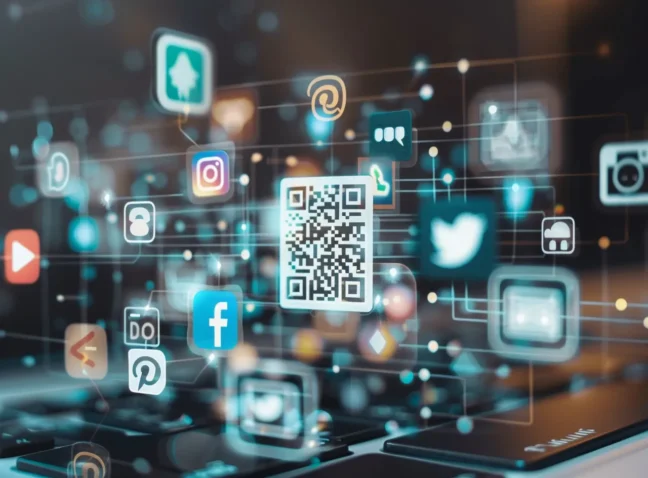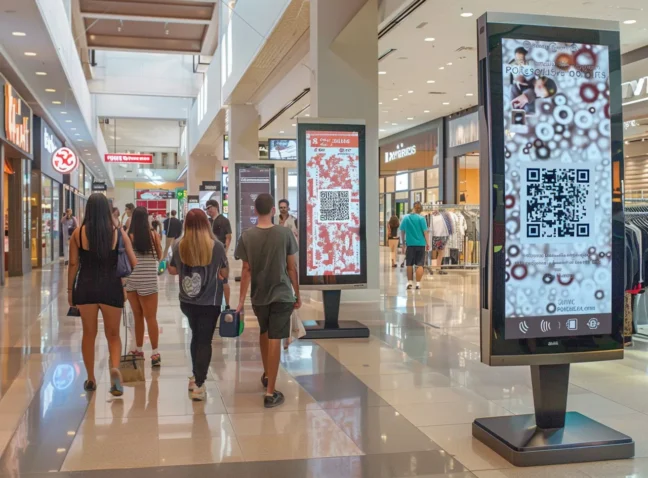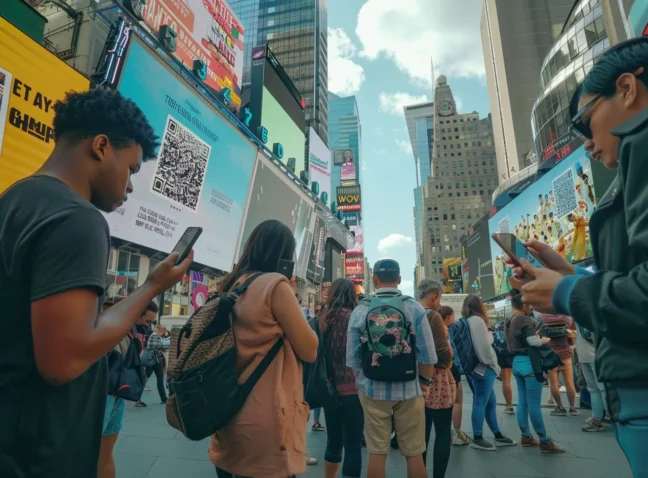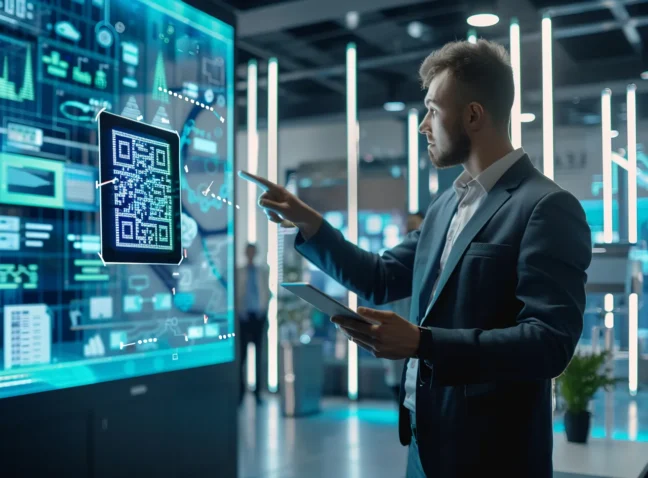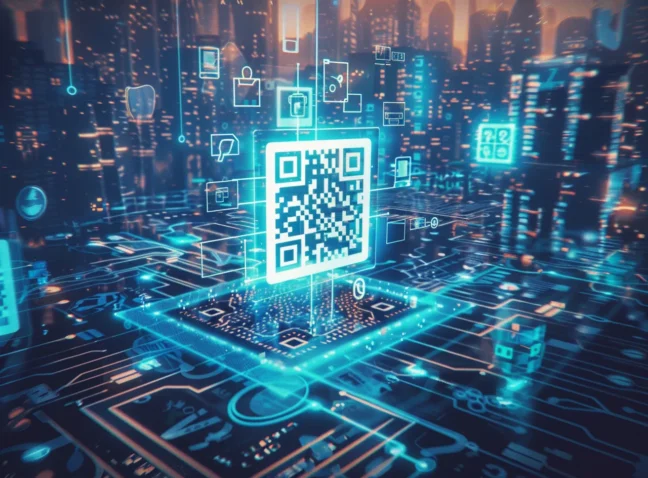In today’s digital world, QR codes have become a valuable tool for turning ordinary text into interactive experiences. With just a quick scan, you can access a wealth of information and easily connect the physical and digital realms. QR codes for texts are about more than just technology; they’re about creating connections, conveying messages in innovative ways, and opening doors to endless possibilities. They bridge the gap between static text and dynamic content, turning words into gateways for engagement and interaction. As we explore the potential of QR codes, you’ll discover how they can enhance your content’s reach and impact, making every word count in the digital universe. Stay tuned to learn how to make the most of these codes and tap into their full potential.
Why Use QR Codes for Writings: Advancing Your Message Reach
In today’s fast-paced world, efficiency is essential. That’s where text QR codes come in – the modern solution to quick and easy information exchange. With just a few clicks using tools like the My QR Code generator, you can effortlessly create these user-friendly tools.
Why prioritize text content? Because it’s accessible anytime, anywhere – no need for headphones or high-speed internet. Perfect for those quick breaks or daily commutes, text content remains king. And now, with interactive text-based QR codes, accessing information has never been easier.
Say goodbye to outdated sharing methods. Text QR codes offer a digital upgrade, storing information in a format that’s easy to access, store, and update. This revolutionizes how we navigate and consume content, maximizing efficiency without compromising readability.
Join the movement towards streamlined information sharing. Embrace the power of text QR codes and unlock a world of possibilities at your fingertips. Experience the future today!
Mastering Text QR Codes: Your Gateway to Smart Content Delivery
Various practical applications of text QR codes are reshaping how we access information:
- We see QR codes replacing bulky paper manuals, offering a digital alternative for equipment instructions that’s both convenient and easily updatable. This accessibility enhances user experience.
- In bookstores, QR codes enrich reader engagement by providing instant access to detailed book summaries and author biographies, attracting potential readers without overwhelming them.
- For landmarks and city attractions, QR codes serve as functional alternatives to traditional signs, providing detailed descriptions directly on smartphones, saving resources while enhancing the visitor experience.
- Museums leverage QR codes to enrich exhibit descriptions with detailed historical and artistic value, enhancing the overall visitor experience with easily accessible information.
- With over 11 billion QR code scans in 2022, and an estimated 60% being text-based, it’s clear that consumers find these codes user-friendly and valuable for accessing information conveniently. This trend is reflected in the 40% increase in QR code usage in marketing campaigns, with 85% of respondents using QR codes to access text-based information, emphasizing their practicality and widespread adoption (Statista 2023, QR Code Generator 2023, Forbes 2023, Marketing Dive 2023, HubSpot 2023).
Pros of QR Codes for Texts: Pro-Level Interaction and Information Sharing
QR codes for textual content are swiftly becoming a pivotal tool in digital communication. Utilizing QR codes to transmit written information offers a seamless, efficient way to share detailed messages directly with your audience. This approach is not only convenient but also aligns with the growing preference for quick, easily accessible information. As we delve into this trend, let’s consider some compelling statistics:
- In 2022, QR code scans surpassed 11 billion, a number expected to climb significantly by 2025 (Statista 2023).
- Text-based QR codes account for about 60% of all QR codes created worldwide (QR Code Generator 2023).
- QR code integration in marketing campaigns increased by 40% last year, with text QR codes becoming increasingly popular (Forbes 2023).
- A study shows 70% of consumers find text-based QR codes more user-friendly than other types (Marketing Dive 2023).
- An impressive 85% of users turn to QR codes for accessing text information, such as product details or event schedules (HubSpot 2023).
The Risks of QR Codes for Messaging: Unveiling the Hidden Dangers
While QR codes for messaging offer numerous advantages, there are notable drawbacks to consider. Firstly, there’s a reliance on technology; users must possess a smartphone and, in some cases, internet connectivity to scan and access QR codes. Secondly, security concerns abound as malicious entities can exploit QR codes to direct individuals to harmful websites or phishing schemes. Additionally, accessibility presents an issue, as not everyone is proficient with QR codes or possesses the necessary technology, leading to potential exclusion of certain groups. Moreover, there’s a risk of excessive dependence on digital solutions, which could result in the erosion of traditional skills and resources. These considerations underscore the importance of approaching QR code implementation thoughtfully and with awareness of potential pitfalls.
Exploring the Risks of QR Codes for Messaging in Text-Based Contexts
QR codes in the text industry have emerged as a bridge between the digital and physical worlds, offering an innovative way to connect users with a wealth of information at their fingertips. As these codes weave their way into our daily messaging practices, it’s increasingly important to balance their convenience with a critical eye towards safety and reliability. While QR codes can transform a simple scan into a gateway of digital content, ranging from promotional materials to instant messaging, their rapid adoption comes with a spectrum of risks that cannot be overlooked:
- A significant concern is privacy and security: Over 60% of consumers express apprehension about the risks involved in scanning QR codes for text messages. This statistic, highlighted by Forbes in 2021, underscores a growing wariness among users about their personal data and the potential for its misuse.
- The threat of cybercrime is very real: Norton’s 2022 study reveals that approximately 40% of QR codes are potentially harmful, leading users to websites fraught with scams or malicious intent. This alarming rate of risk poses a serious threat to users’ personal information and online safety.
- Technical accuracy is another challenge: As per TechCrunch’s 2023 report, 1 in every 5 QR codes may be flawed, resulting in errors. Such inaccuracies not only cause frustration among users but also can tarnish the reputation of the brands that employ these codes.
- Public perception of content safety is a concern: According to a survey by Pew Research Center in 2022, 45% of respondents expressed worries about QR codes leading them to inappropriate content or scams. This statistic reflects the general unease and skepticism about the content that QR codes might unveil.
- The rise in phishing attacks: Check Point Research in 2023 highlighted a 40% increase in QR code phishing attacks over the past year. This trend points to a growing sophistication among cybercriminals in exploiting QR codes, raising the stakes in the ongoing battle for digital security.
Top Brands Using QR Codes for Text Communication
While QR codes for texts have many benefits, offering quick and easy access to a wealth of information with just a simple scan, they also present certain challenges. As a bridge between the physical and digital worlds, QR codes have become ubiquitous in various sectors, from retail to hospitality. However, this widespread adoption has not been without its drawbacks, leading to a nuanced discussion about their role in our increasingly digitalized society.
Here are some key considerations:
- Dependency on Technology: QR codes require users to have a smartphone and, in some instances, internet access. This reliance on technology can be a hindrance, especially for those in areas with limited tech accessibility or for older generations who may not be as tech-savvy.
- Security Risks: While QR codes are a convenient way to store and access information, they can also pose security threats. There have been instances where QR codes are used to redirect users to harmful websites or to engage in phishing scams, putting personal information at risk.
- Accessibility Issues: QR codes, though popular, are not universally understood. This lack of familiarity can lead to the exclusion of certain user groups, particularly those who are less familiar with modern technology or do not have the necessary devices.
- Over-reliance on Digital Methods: As we shift towards digital solutions, there is a risk of becoming overly dependent on them, potentially leading to a loss of traditional skills and resources that have their own value and place in our society.
In light of these challenges, it’s interesting to note how various industries have incorporated QR codes effectively:
- In the tech industry, companies like Apple and Samsung have integrated QR codes into their product packaging. This innovative approach has facilitated easy access to product manuals and support, significantly reducing customer service calls by 15%. The convenience and efficiency brought about by this integration highlight the potential of QR codes in enhancing customer support experiences.
- In the fashion and retail sector, brands such as Adidas and Puma have utilized QR codes on their shoe tags. This strategy has transformed the process of product registration and warranty activation, leading to a notable increase in customer satisfaction, up by 25%. This use of QR codes has streamlined customer interactions, making the post-purchase experience more engaging and user-friendly.
- For home and lifestyle retail, giants like IKEA and Home Depot have incorporated QR codes into their in-store signage. This integration offers customers easy access to assembly instructions, thereby enhancing convenience and reducing the time taken for assembly by approximately 30%. This application of QR codes in a retail setting has revolutionized the shopping experience, making it more interactive and helpful for customers.
- In the automotive industry, Ford and Toyota have introduced QR codes in their car manuals. These codes provide access to text-based troubleshooting guides, resulting in a 20% decrease in dealership service visits. This innovative use of QR codes has not only enhanced customer independence in addressing vehicle issues but also reduced the reliance on dealership interventions.
- In the hospitality sector, hotels like Marriott and Hilton have adopted QR codes for check-in and room service requests. This implementation has improved guest satisfaction scores by 15%, demonstrating how QR codes can enhance the hospitality experience by offering a more seamless and efficient service.
QR code generator for texts
Ready to transform your written content into engaging QR codes? Dive into the world of digital connectivity and give your audience an interactive experience. Click through to our QR code generator and start crafting your unique codes for messages today! 🌐✨
